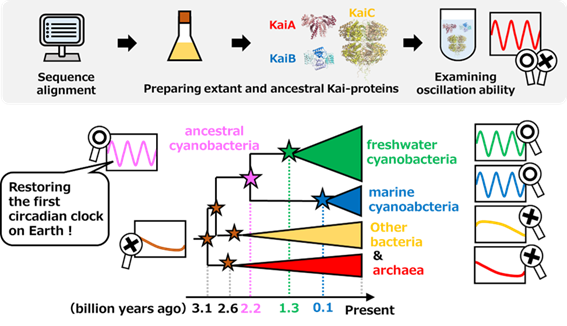Release Summary
To better understand the circadian clock in modern-day cyanobacteria, a Japanese research team has studied ancient timekeeping systems. They examined the oscillation of the clock proteins KaiA, KaiB, and KaiC (Kai-proteins) in modern cyanobacteria, comparing it to the function of ancestral Kai proteins.
Their research is published in the Nature Communications on May 15th, 2025.
“Extant cyanobacteria utilize a circadian clock to predict the light-dark environmental cycle by Earth’s rotation in order to achieve efficient photosynthetic reactions. We wanted to know the evolutionary history of when ancient bacteria acquired the circadian clock and how this property was inherited by the present cyanobacteria,” said Atsushi Mukaiyama, Associate Professor, Fukui Prefectural University.
For Details(EurekAlert!)

